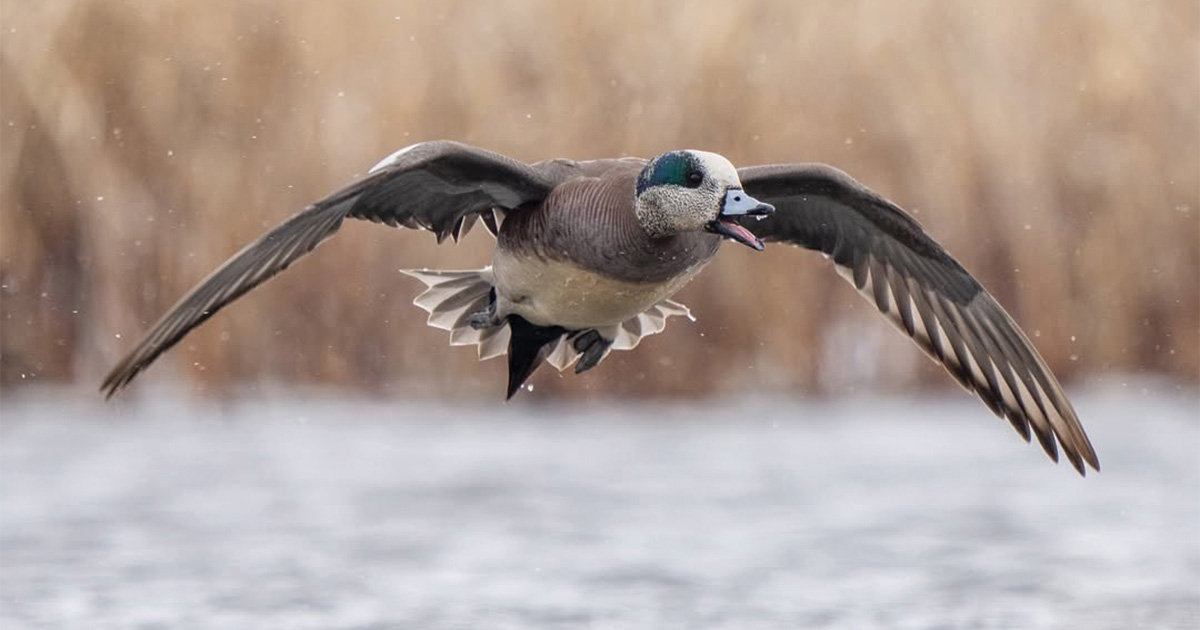Migration Alert: Cold Snap Kickstarts Migration in Central Flyway
Nov. 12, 2025 – Central Flyway – North and South Dakota
Nov. 12, 2025 – Central Flyway – North and South Dakota

A round of freezing temperatures and snow over the weekend in parts of Canada, North Dakota, and South Dakota produced the first significant migration event of the season for the Central Flyway. Read on for more details on where hunters are seeing ducks and geese on the move and just how far north the bulk of the birds remain heading into the middle of November.
The concern heading into last weekend was that the season’s first taste of winter weather was going to be enough to slam the door shut on hunting opportunities in the northern section of the Central Flyway. With the cold front now in the rearview mirror, it appears that the door has closed slightly but remains open for the time being.
“We most certainly saw the first significant migration event of the season over the weekend, with white-fronted geese, sandhill cranes, Canada geese, and snow geese all on the move, but our season is not over quite yet,” reports John Palarski, migratory game bird supervisor with the North Dakota Game and Fish Department. “Overnight temperatures were cold for a few nights, but it just wasn’t enough to make ice on our bigger water bodies. And even on some of the smaller lakes and wetlands, there are birds keeping a hole open.”
Temperatures this week across the northern Central Flyway are expected to return to well above freezing, and much of the snow that fell across the region has already melted, Palarski reports.
“We were shooting gadwalls and wigeon over the weekend, which tells me that the season-ending migration event has yet to occur, at least here in North Dakota,” says Palarski.
Chris Hustad, who primarily targets snow geese in central North Dakota, reports that the state picked up a significant number of light geese over the weekend, and he expects that with the forecasted warm-up, the birds aren’t going anywhere anytime soon.
“I was texting with some contacts in southeastern Saskatchewan over the weekend, and they said it was just lines of snows, nosebleed high in the sky, heading our way, and thankfully those birds did show up,” Hustad says. “It is probably one of the latest migrations of snow geese into North Dakota that I can remember, and I’ve been chasing them for 30 years now. They were hitting the corn hard when they arrived, but with the warmer temperatures coming, you can just see that there isn’t the urgency in their daily movement. They are settled in now, in full-on staging mode, and it will take another good blast of winter to get them moving again.”
It is a similar story in South Dakota, where hunter and guide Ben Fujan notes that the first significant migration of the season arrived over the weekend. He remains optimistic about the duck hunting prospects moving forward.
“We saw a lot of snows and Canada geese pushing south over the weekend. There were some ducks pushing as well,” Fujan says. “Lots of divers moved in, and we still have a lot of puddlers like wigeon and gadwalls around. Our speck numbers are good. Swans are behind schedule. The good news for us is that we still have gobs of open water, and I imagine that more will open back up this week. Overall, our duck numbers are really good, and with no significant change in the weather on the horizon, we should have some good hunting in the days to come.”
Stay up to date with the latest migration information.
Ducks Unlimited uses cookies to enhance your browsing experience, optimize site functionality, analyze traffic, and deliver personalized advertising through third parties. By continuing to use this site, you agree to our use of cookies. View Privacy Policy